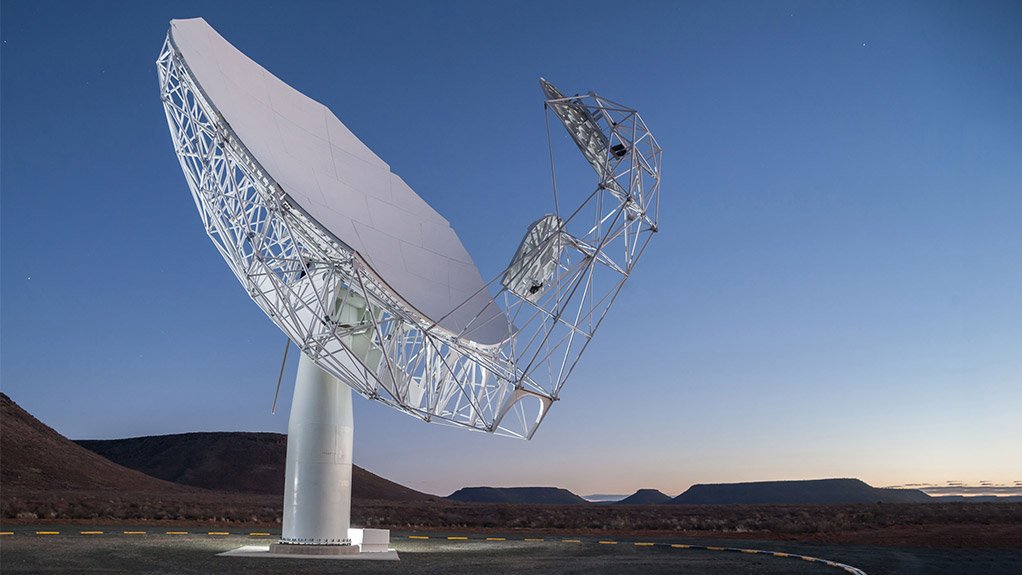South Africa's MeerKAT radio telescope array programme should get back on schedule within a few months. This assurance was given to Engineering News Online by SKA South Africa (SKA SA) associate director: science and technology Professor Justin Jonas on Thursday.
Early last month, Science and Technology Minister Naledi Pandor expressed concern about progress on the country's flagship science programme, which is the biggest science project in Africa to date. "If there is a timeline, we must adhere to it or explain to the South African people why the delay is happening," she said.
"The first dish is not fully qualified yet and we had hoped it would be," explained Jonas. "There has consequently been a slippage with the second dish. We're working very closely with the contractor. They will get back on to the production curve within the next few months."
The first two dishes are, he pointed out, effectively prototype units. "Getting their engineering processes going properly has taken more time than expected."
Another factor is the country's requirement that 75% of the work be done locally. This necessitates agreements, alliances and contracts between the overseas suppliers and local enterprises, and negotiating and implementing these has also taken longer than originally expected.
"If we had used international contractors, we would not have had some of these delays. But the slippage is a price worth paying to achieve local production," he affirmed. "Now, the international contractors are looking at using their newly-qualified South African partners to supply overseas markets."
All the other subsystems are on or ahead of schedule, he reported. Two receivers have been fitted to the first dish and all of the digital back end electronics, data analysis systems and control software have been installed at the Karoo site. This equipment makes up the Receptor Test System that will be used to qualify the first two dishes as soon as they become available.
Meanwhile, astronomers in a continental European country have asked their national science funding agency to buy a suite of receivers to install on MeerKAT dishes. Each dish is designed to accommodate four receivers, but South Africa is fitting only three, leaving space for international partners to install the fourth, if they desire.
MeerKAT, when completed, will be composed of 64 dishes, each about 13.5 m in diameter. These will be organised into a central core and outstretching arms, and the entire instrument will extend over about 8 km. More than 200 scientists and engineers are currently employed on the MeerKAT and international Square Kilometre Array (SKA) projects, both at the SKA SA project office and at various South African universities.
SKA SA is the agency responsible for the seven-dish KAT-7 radio telescope array, the MeerKAT and South Africa's involvement in the SKA project. In due course, MeerKAT will be absorbed into the SKA and form 25% of SKA Phase 1.
Jonas made a presentation on the MeerKAT, SKA and other programmes at the 2014 South African Institute of Physics conference at the University of Johannesburg, on Thursday.
EMAIL THIS ARTICLE SAVE THIS ARTICLE
To subscribe email subscriptions@creamermedia.co.za or click here
To advertise email advertising@creamermedia.co.za or click here











